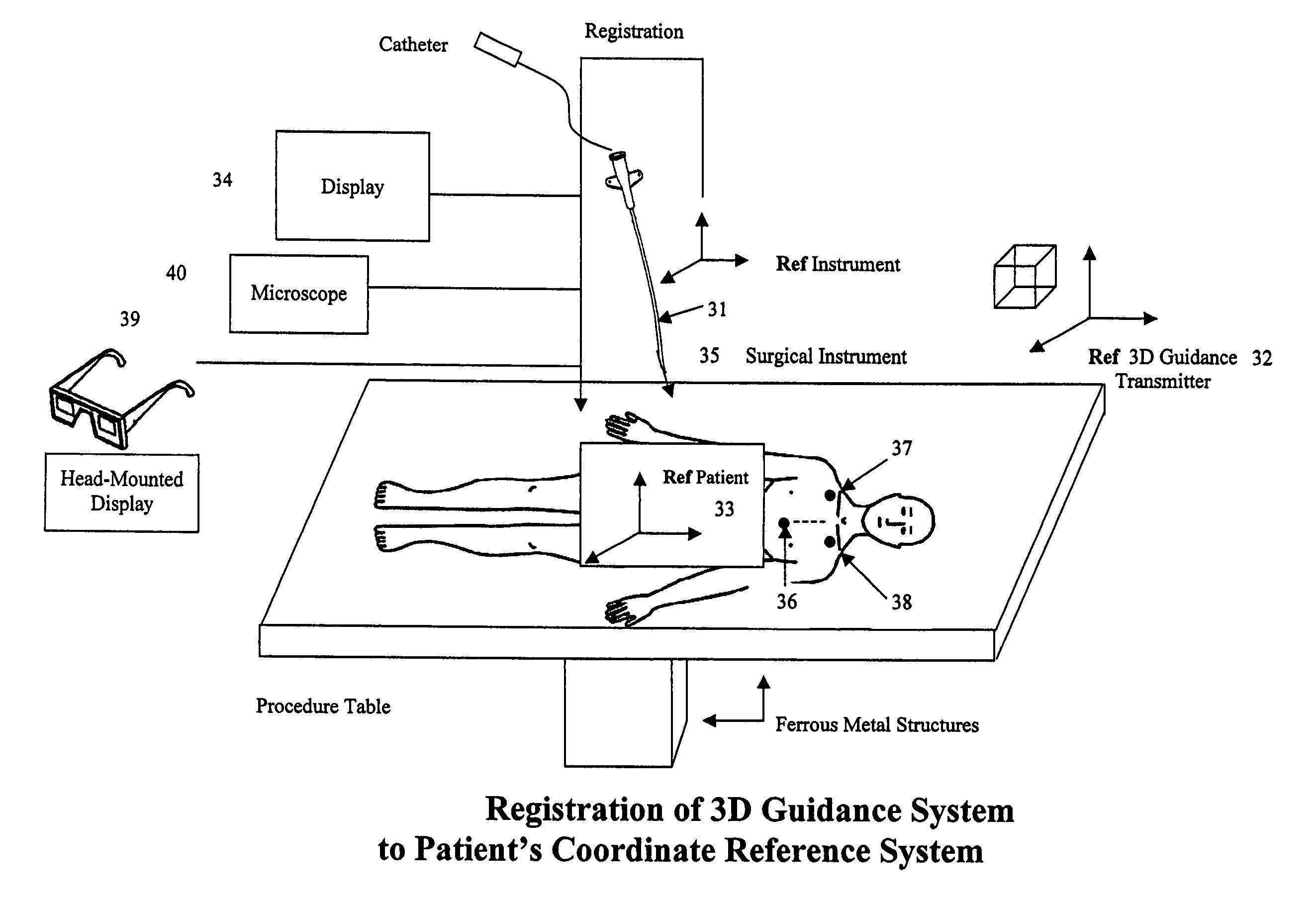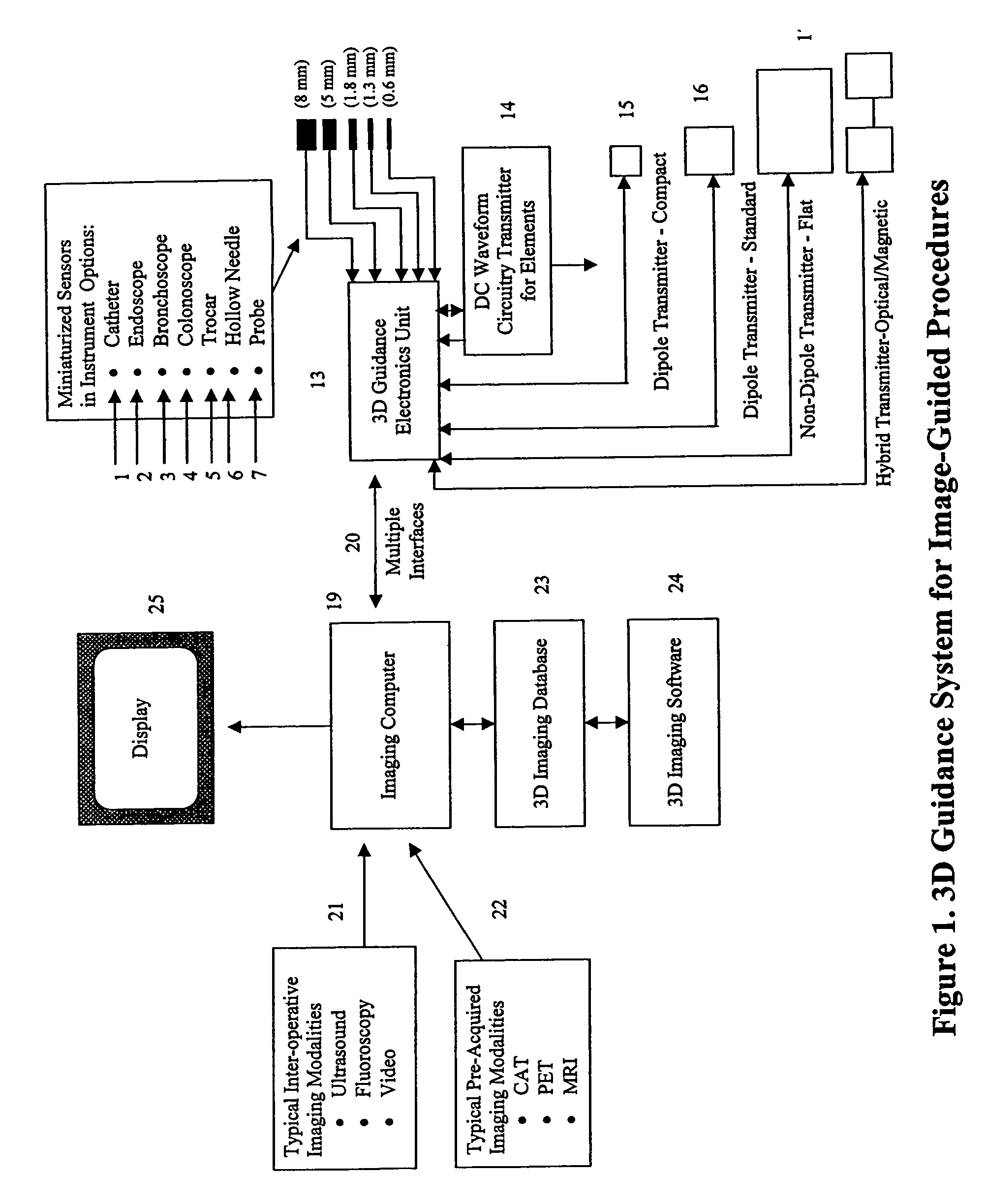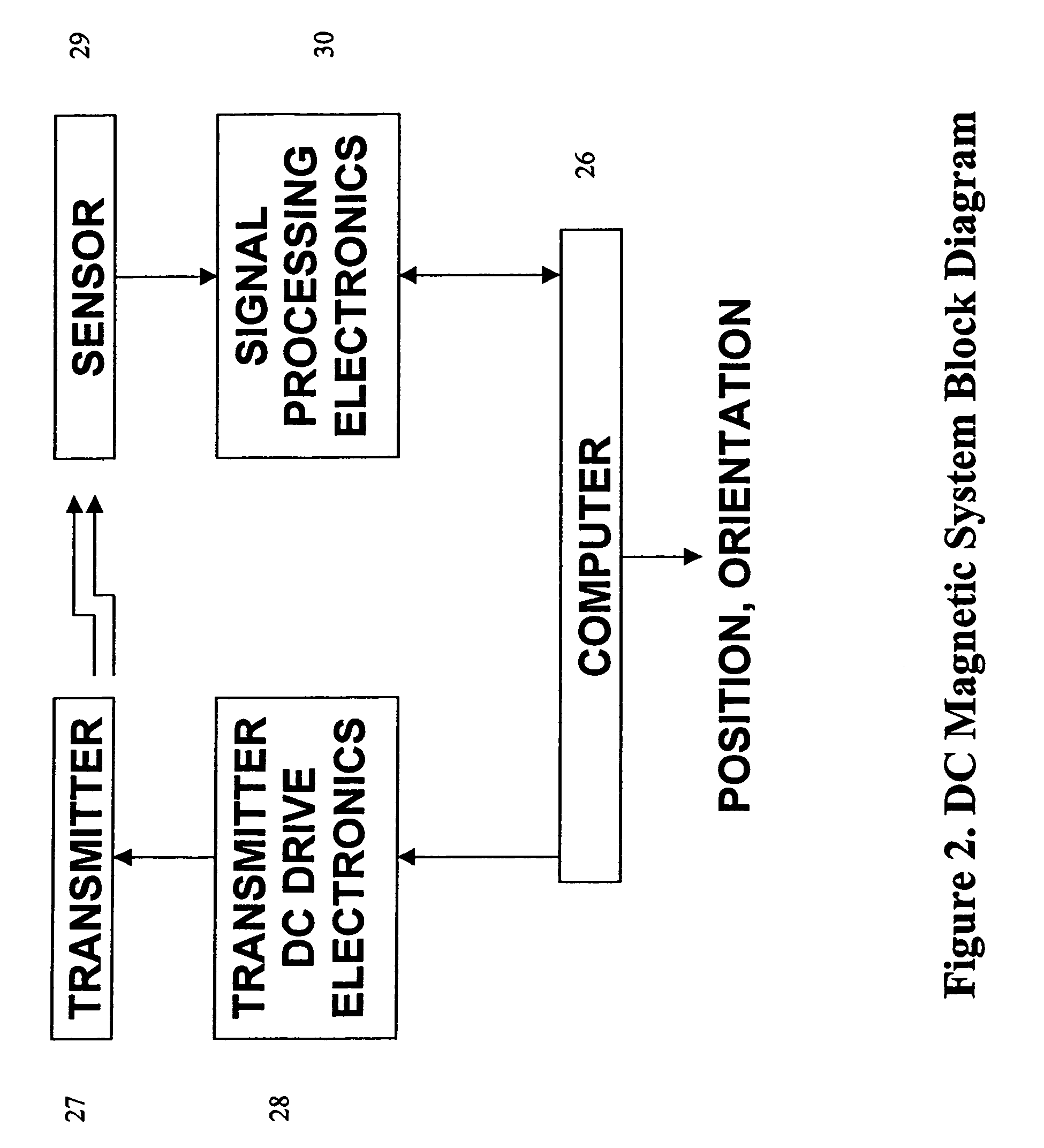DC magnetic-based position and orientation monitoring system for tracking medical instruments
a position and orientation monitoring and medical instrument technology, applied in the field of dc magnetic-based apparatus, can solve the problems of inability to meet all purposes, inability to meet the needs of one set of components or technologies, and inability to meet the needs of all purposes, etc., to achieve the effect of overcoming disposability and cost problems, and high volum
- Summary
- Abstract
- Description
- Claims
- Application Information
AI Technical Summary
Benefits of technology
Problems solved by technology
Method used
Image
Examples
Embodiment Construction
[0059]FIG. 1 presents an exemplary embodiment of the DC magnetic guidance system for image-guided medical procedures. A representative example of the DC tracking portion of the guidance system is detailed in U.S. Pat. No. 6,754,596 to Ashe, which is assigned to the assignee and incorporated herein by reference. The system includes a freely moving medical instrument, by which is meant all manner of surgical tools and devices for use in medical treatment. It is typically initialized for computer use as one or more of the devices, identified by the reference numerals 1, 2, 3, 4, 5, 6 or 7, namely, such as a catheter capable of being inserted within a patient's body through the skin, bodily orifice or incision. It permits targeting of an anatomical organ, structure or vessel for visualization, diagnostic and / or interventional purposes. Such instruments are typically thin, elongated and flexible, containing a proximal end for control by the physician and at the distal end, a DC sensor as...
PUM
 Login to View More
Login to View More Abstract
Description
Claims
Application Information
 Login to View More
Login to View More - R&D
- Intellectual Property
- Life Sciences
- Materials
- Tech Scout
- Unparalleled Data Quality
- Higher Quality Content
- 60% Fewer Hallucinations
Browse by: Latest US Patents, China's latest patents, Technical Efficacy Thesaurus, Application Domain, Technology Topic, Popular Technical Reports.
© 2025 PatSnap. All rights reserved.Legal|Privacy policy|Modern Slavery Act Transparency Statement|Sitemap|About US| Contact US: help@patsnap.com



